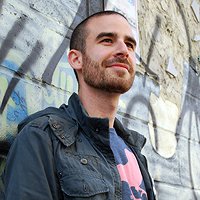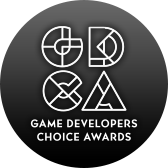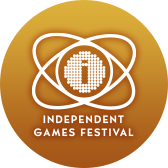Capy Games president and co-founder Nathan Vella knows he's in charge of a creative powerhouse, and in his GDC Next 10 talk, "From Game Jam to Full Game -- Super TIME Force & Other Shining Examples" he'll be speaking about how regularly participating in weekend game jams is key to fueling said creativity.
In advance of GDC Next, taking place in Los Angeles next month, GDC Director of Online Community Patrick Miller asked the Toronto-based Vella about Capy's jamming habits, the process of nurturing a jam idea into a full-team project, and what to expect in his upcoming talk.
Patrick Miller: Tell me a little bit about your game jam process; do you regularly have internal jams at Capy, or do you and your team participate in other external jams?
Nathan Vella: A few years ago we decided to start running a yearly Capy Jam at the studio, usually around Christmas. We chose that time as people tend to be winding down a little before the holidays, as well as because TOJAM typically happens in May, meaning that we get to jam around every six months.
We've tried to figure out if we can run them more often, but the whole "we're a game studio" thing tends to get in the way a little. Thankfully there's external jams to supplement.
As mentioned, we usually have a slew of Capy-folk attending TOJAM -- that's where Super Time Force originated. It's a hugely positive component of the local game culture, and really played a key role in crystallizing the independent scene here in Toronto. Every year it grows, and every year folks at Capy make rad stuff there.
Beyond that, some team members recently contributed to the ROM JAM, a jam held at the Royal Ontario Museum. You know, just a game jam happening beside 70+ million year old dinosaur bones, because why not?
PM: How do game jams stand in contrast to your other methods of generating and growing new game ideas? Do you find that jams give you qualitatively different ideas to work with, or is it simply a different way of getting to the same path? Do you think you would have ended up coming up with Super TIME Force if your team hadn't jammed?
NV: I don't think there's an easy way to denote our "path to new games". From our point of view, how you get to a great concept, or who pitches the great concept, is sort of inconsequential. From one side, Below is a game that's been living inside Capy creative director Kris Piotrowski's mind for a long time. He pitched it to us, we loved it, and started prototyping.
Super TIME Force, on the other hand, was three Capy veterans (Kenneth Yeung, Mike Nguyen & Vic Nguyen) creating something crazy at TOJAM, and bringing it back to show the rest of the studio. Those are two vastly different approaches for generating and growing games at Capy, but neither path was premeditated. It was more that the games materialized and we just knew we had to work on them.
Jams, for Capy, are never about generating ideas that will lead to products. We've run a bunch of Capy Jams without ever releasing a single game, and Capy Jams are never set up with the goal of creating a potentially commercial concept. From our POV, internal jams serve a slew of different purposes. Most importantly, in my opinion, is that they give people a fresh creative outlet.
Making games is really freaking hard, and when you work on the same thing for a long time you can't help but start thinking about everything in terms of that single project. You lose perspective, so to speak. We've found internal jams help lighten that burden via forcing us all into different types of creative problem solving.
Internal jams also ensure everyone gets to work with someone they rarely work with, so it doubles as another layer of team-building. And jams remind us all that making games is fun, whether you're working on a big console project or you're crunching to finish something ridiculous in three days.
PM: From my own limited experience with game jams, I find that a three-day dev window makes it much easier to get excited about a game that is exploring a small, fun concept -- but few of those concepts end up being something I could envision a studio like Capy investing in fleshing out fully. What's your "yield" like on game jam concepts? How can you tell when you've got something worth going all-in on?
NV: The benefit of not approaching internal jams, or game jams in general, with the goal of creating something commercial, is that it's far more likely you'll create something that is just, organically cool. When you set out to jam, you already have a series of limitations, but those limitations tend to be the looking glass that focuses the creativity into a white-hot beam of game-energy.
Commercializing it would disperse that beam almost immediately because it imposes an entirely different limitation that conflicts directly. For that reason, our yield is intentionally very low. On the other hand, a studio like Double Fine has been super effective commercializing their Amnesia Fortnight jam games - which, to me, shows that there's different ways to approach the goals and intended results of a jam.
The reason I was keen to discuss taking Jam games to "released games" at GDC Next is because of how hard it's been to develop Super Time Force. It's been a massive design challenge, and has taken us far longer to settle on something that we feel is great, rather than something that is "exploring a small, fun concept" as you said. When discussing with other devs doing the same, it seems almost unanimous that it takes time and energy to turn something created during a jam into something to go all-in on, and that process needs to be discussed.
Hopefully my talk is just the first baby step in this discussion that I am keen to have, and we all can figure out if there's any best practices or ideal paths for making it work.
PM: Got any tips for other dev studios looking to work internal game jams into their workflow? How do you accommodate for the "lost" work hours? Have you learned anything that improves the "yield" of your jam process -- either in terms of quality of ideas or the actual in-jam dev process?
NV: When we first decided to do Capy Jam, we worried greatly about the "lost" work hours and the money-factor of the "combined studio burn" for "no commercial gain". After our first jam, we realized immediately that those worries were based on false assumptions. We no longer believe there is a hard cost associated with taking 3-4 days to jam.
The first tip I have for other studios looking to incorporate jams into their office culture is to focus on the gains that come from a 3-4 day jam, not the perceived costs. Everyone at our studio busts ass before Capy Jam to get tasks done and clear their plates. Everyone works smarter, more creatively, and more enjoyably after Capy Jam. It creates more camaraderie and more positivity at the studio. All these things drastically outweigh any hard costs. I am confident saying Capy Jam costs us nothing, and loses no time.
While most external jams apply some kind of 'theme', we've found that its more enjoyable and therefore more beneficial to just let people create whatever they want. For some teams the theme might be super useful, but at Capy themes don't add much.
Another valuable lesson we learned is to require teams to work on PC, using tools meant for rapid development -- Unity, Game Maker, anything programmers have personally used for the purpose of prototyping or iterating. This extends through tools -- using personally-created tools, studio tools that enable better workflow, or well-documented open source tools helps a ton as well.
Perhaps the most important lesson we learned is that there needs to be an entire day dedicated to playing and discussing the results. Ideally with beer and food.
PM: ...What's your favorite kind of jam?
NV: Strawberry freezer jam, made with local Ontario berries, yo.
Online registration is in full swing for GDC Next and the co-located ADC; register now and save up to $200 on ADC, GDC Next, or a combined VIP All Access Pass. For all the latest news on GDC Next, subscribe for updates via Facebook, Twitter, or RSS. Also, check out ADC's recently announced design talks: Intel on building scalable and secure APIs for enterprise apps, and ChaiONE on pairing the latest wearable technology with smartphones.
Also, check out the 'What's Next' interview series, where GDC discusses prospects and trends for the future of video games, with Kim Pallister, Robert Zubek, Greg Rice, Chris Crawford, Starr Long, Thomas Bidaux, Teut Weidemann, David Cage, Warren Spector, Sunni Pavlovic, James Paul Gee, Raph Koster and Chris Pruett.



